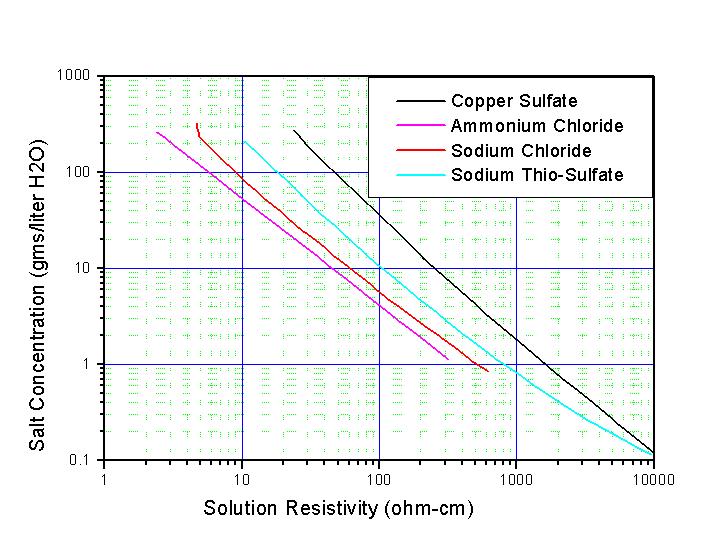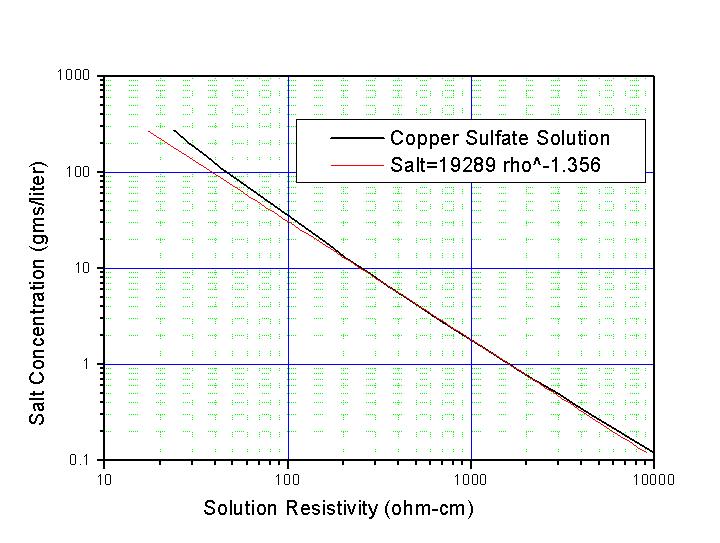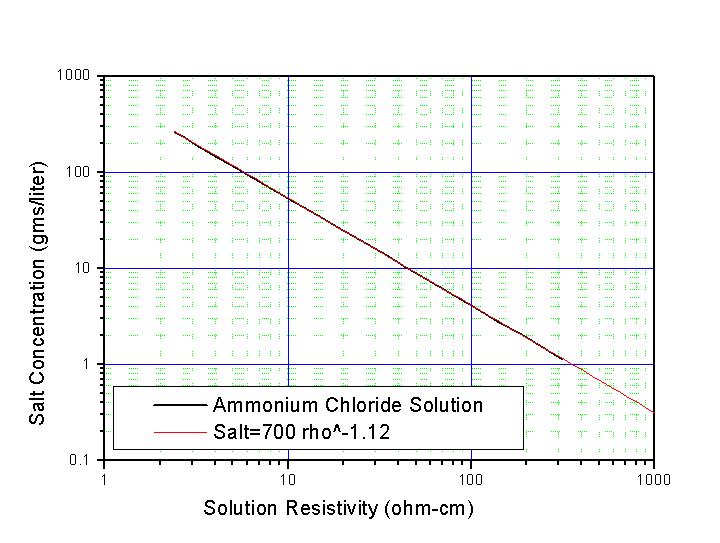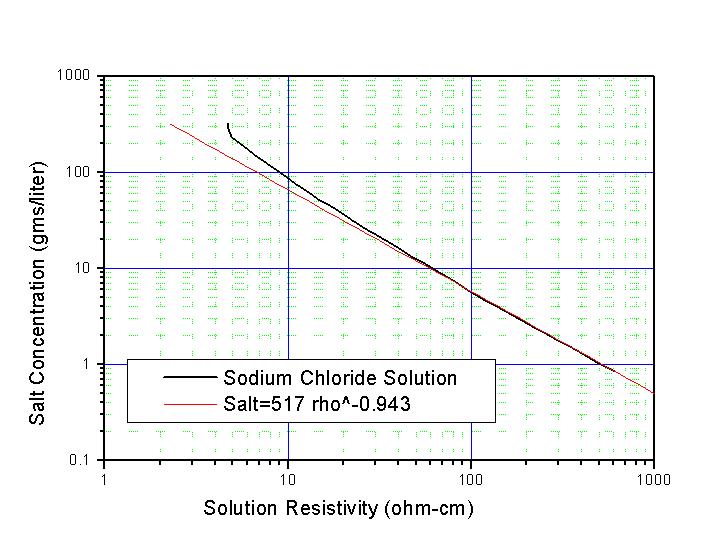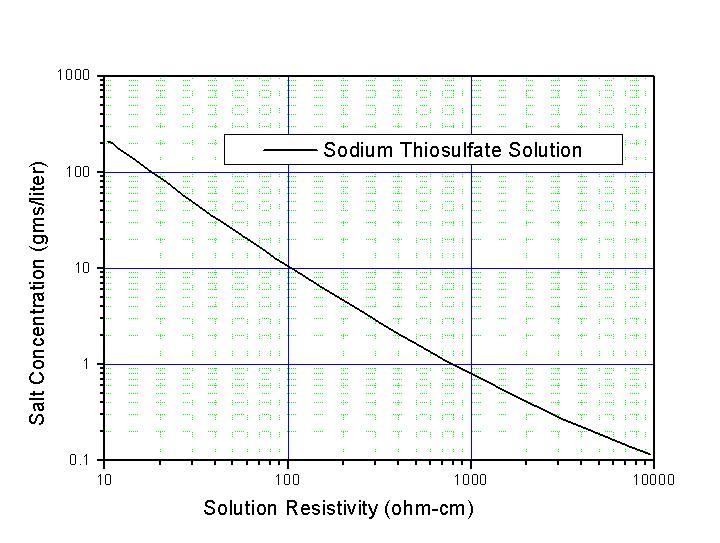Copper Sulfate Ammonium Chloride Sodium Chloride Sodium Thiosulfate
Liquid resistors are often used in high voltage ac and pulsed power applications. The advantage of these types of resistors is that they can be assembled relatively inexpensively and can absorb large amounts of energy. The disadvantage is that it is somewhat difficult to obtain precise resistance values (rarely better than +/-10%) and the temperature of the solution can vary the resistance significantly. As a result, these resistors are often used in charging systems, dump resistors, etc. in large energy storage capacitor banks where precise resistor values are not necessarily required.
Liquid resistors are usually constructed from tubes of flexible insulating material (such as Tygon) with flat shaped electrodes inserted into both ends and the tube filled with electrolyte solution. Hose clamps or tie wraps seal the tube against the electrode. Electrode material selection depends upon the chosen solution to ensure that contamination of the liquid does not occur over time. A variety of chemical solutions have been used in the past for liquid resistors and four of the most common are shown below in the figure.
Copper Sulfate (CuSO4) Liquid Resistors
Copper sulfate (CuSO4) is often used for liquid resistors. A saturated solution of copper sulfate has a resistivity of ~22 ohm-cm. With this solution, the electrode material should be copper. The graph below shows the salt concentration required for a given copper sulfate solution resistivity (rho) and a curve fitting function to solve for the salt concentration (salt).
Ammonium Chloride (NH4Cl) Liquid Resistors
Although copper sulfate solutions are probably the most commonly used liquid resistor, other solutions can also be used depending upon the application requirements. From the figure above, one can see that the resistivity of ammonium chloride (NH4Cl) solution is lower than the other examples. As a result, this solution is often used for low resistance values. When saturated, the resistivity of this solution is ~2 ohm-cm. Stainless steel (SS304) electrodes are used with this solution. The graph below shows the amount of salt concentration required for a given solution resistivity and a curve fitting equation similar to that above.
Sodium Chloride (NaCl) Liquid Resistors
Sodium chloride (NaCl or table salt) solutions can also be used to make low resistance values. The saturated resistivity of this solution is ~5 ohm-cm and the graph below shows the salt concentration vs. solution resistivity along with a curve fitting function.
Sodium Thiosulftate (Na2S2O3) Liquid Resistors
Finally, Sodium thiosulfate (Na2S2O3) is also used in fabricating liquid resistors and the salt concentration vs. solution resistivity of this solution is shown below in the graph. In this case, a curve fitting function has not been applied.
Send consulting inquiries, comments, and suggestions to
nessengr@san.rr.com [HOME] [RESUME] [PUBLICATIONS] [NEWS] [LINKS] [CAPABILITIES] [TECHDATA]Ness Engineering, Inc.
P.O. Box 261501
San Diego, CA 92196
(858) 566-2372
(858) 240-2299 FAX
© Richard M. Ness and Ness Engineering, Inc. |
Website File Auto-Update Javascript courtesy of www.javafile.com Download the Script
